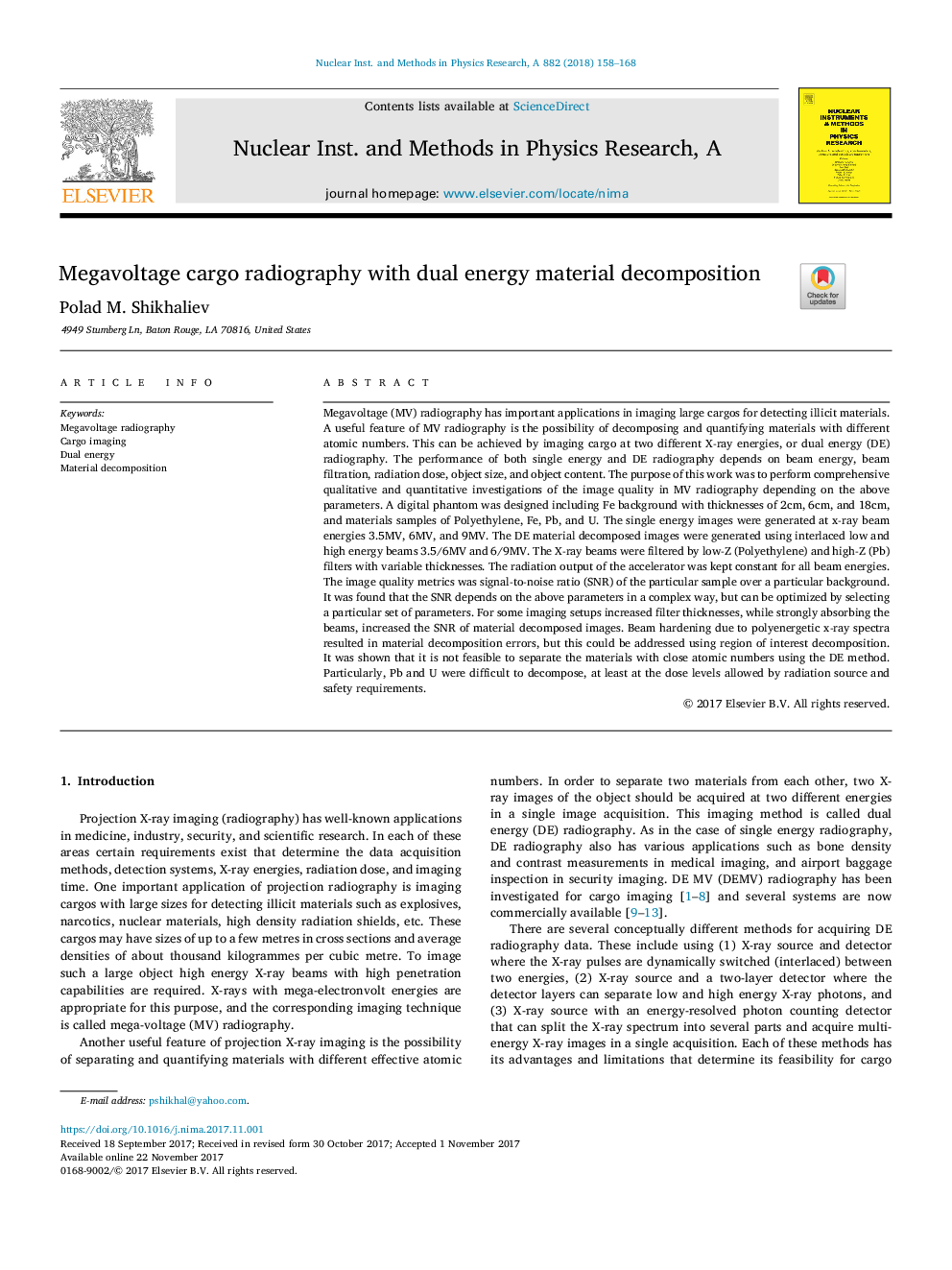| کد مقاله | کد نشریه | سال انتشار | مقاله انگلیسی | نسخه تمام متن |
|---|---|---|---|---|
| 8167070 | 1526244 | 2018 | 11 صفحه PDF | دانلود رایگان |
عنوان انگلیسی مقاله ISI
Megavoltage cargo radiography with dual energy material decomposition
ترجمه فارسی عنوان
رادیوگرافی مگا نقاشی با تجزیه مواد دوگانه مواد
دانلود مقاله + سفارش ترجمه
دانلود مقاله ISI انگلیسی
رایگان برای ایرانیان
کلمات کلیدی
رادیوگرافی مگا نقاشی، تصویربرداری بارگیری، انرژی دوگانه، تجزیه مواد،
موضوعات مرتبط
مهندسی و علوم پایه
فیزیک و نجوم
ابزار دقیق
چکیده انگلیسی
Megavoltage (MV) radiography has important applications in imaging large cargos for detecting illicit materials. A useful feature of MV radiography is the possibility of decomposing and quantifying materials with different atomic numbers. This can be achieved by imaging cargo at two different X-ray energies, or dual energy (DE) radiography. The performance of both single energy and DE radiography depends on beam energy, beam filtration, radiation dose, object size, and object content. The purpose of this work was to perform comprehensive qualitative and quantitative investigations of the image quality in MV radiography depending on the above parameters. A digital phantom was designed including Fe background with thicknesses of 2cm, 6cm, and 18cm, and materials samples of Polyethylene, Fe, Pb, and U. The single energy images were generated at x-ray beam energies 3.5MV, 6MV, and 9MV. The DE material decomposed images were generated using interlaced low and high energy beams 3.5/6MV and 6/9MV. The X-ray beams were filtered by low-Z (Polyethylene) and high-Z (Pb) filters with variable thicknesses. The radiation output of the accelerator was kept constant for all beam energies. The image quality metrics was signal-to-noise ratio (SNR) of the particular sample over a particular background. It was found that the SNR depends on the above parameters in a complex way, but can be optimized by selecting a particular set of parameters. For some imaging setups increased filter thicknesses, while strongly absorbing the beams, increased the SNR of material decomposed images. Beam hardening due to polyenergetic x-ray spectra resulted in material decomposition errors, but this could be addressed using region of interest decomposition. It was shown that it is not feasible to separate the materials with close atomic numbers using the DE method. Particularly, Pb and U were difficult to decompose, at least at the dose levels allowed by radiation source and safety requirements.
ناشر
Database: Elsevier - ScienceDirect (ساینس دایرکت)
Journal: Nuclear Instruments and Methods in Physics Research Section A: Accelerators, Spectrometers, Detectors and Associated Equipment - Volume 882, 21 February 2018, Pages 158-168
Journal: Nuclear Instruments and Methods in Physics Research Section A: Accelerators, Spectrometers, Detectors and Associated Equipment - Volume 882, 21 February 2018, Pages 158-168
نویسندگان
Polad M. Shikhaliev,
